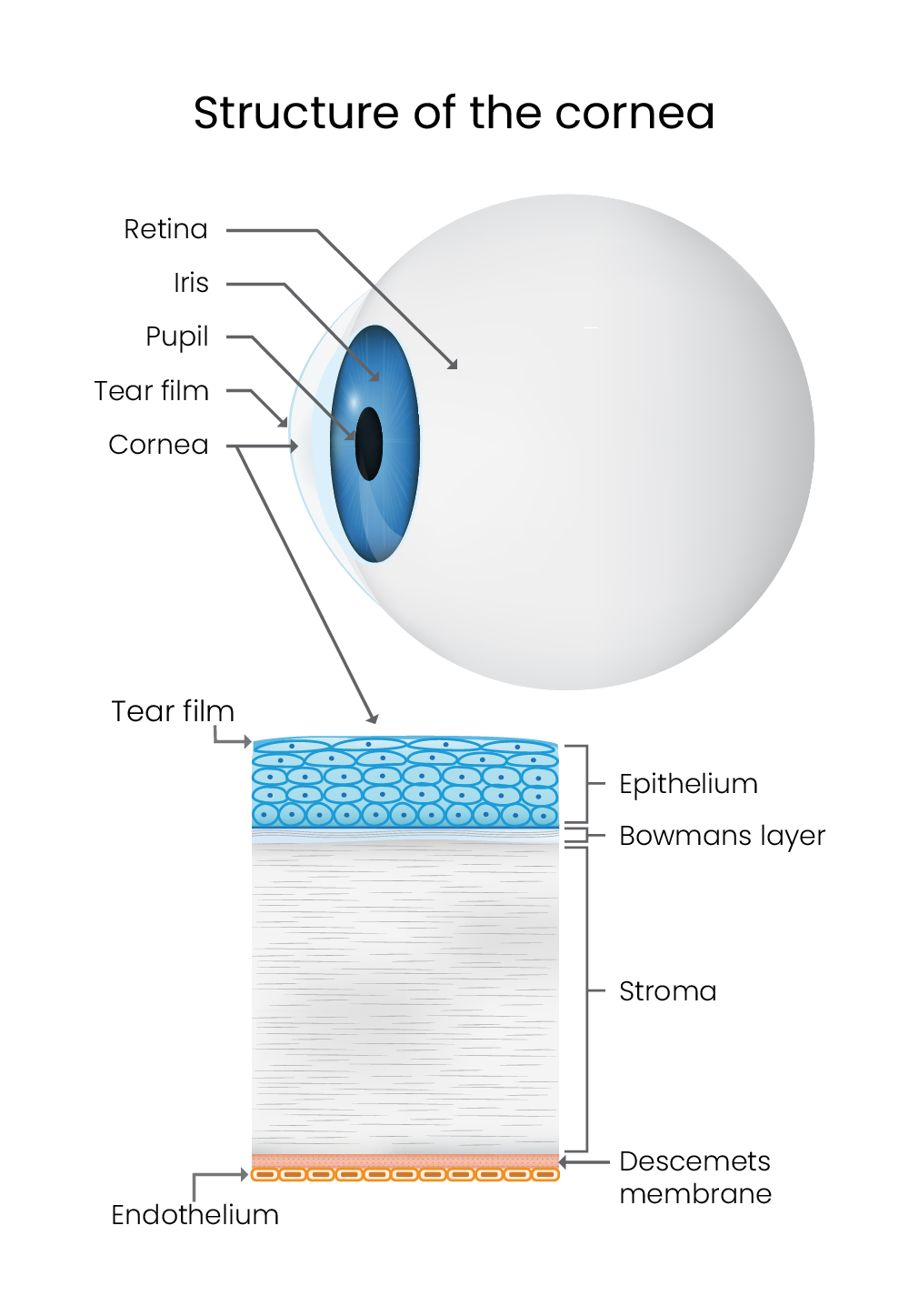Fuchs’ Dystrophy in Brisbane, QLD
Your guide to management and treatment.
What is Fuchs’ Dystrophy
Your cornea has three layers: the outer epithelium, the middle layer called the stroma and the innermost endothelium. The cells of the endothelium function as small pumps, pumping fluid out of the cornea back into the eye to keep fluid out of the stroma layer. These tiny pumps keep the cornea thin and clear.
In Fuchs’ dystrophy, the endothelial cells do not function efficiently; as a result, water builds up in the cornea, causing it to swell and become cloudy. This leads to increasingly hazy or blurry vision. In severe cases of corneal swelling, blisters can form on the surface of the cornea, causing pain and other complications.
Fuchs’ dystrophy is believed to be hereditary, although there may be hormonal or inflammatory factors at play, too. It is most common in women and, although adults in their 30s and 40s can get the disease, it rarely affects vision until a person reaches his or her 50s or 60s. Fuchs’ dystrophy usually affects both eyes simultaneously.


Do you routinely wake up in the morning with hazy or blurry vision, and find your vision gradually clears as the day goes on? This may be indicative of a disease known as Fuchs’ dystrophy. The disease affects the clear outer covering of your eye, called your cornea.
At The Eye Health Centre, we care deeply about the health of your eyes and the clarity of your vision. If you are experiencing troubling visual symptoms, we encourage you to seek our help so we can determine the root cause of the problem and consult with you about your treatment options.
What are the symptoms That Suggest Fuchs’ Dystrophy
In the early stages of Fuchs’ dystrophy, vision is hazy or blurry in the morning (as if there is a cloudy film over the eyes) but improves as the day goes on. As the condition advances, hazy or blurry vision may last all day. Other symptoms of Fuchs’ dystrophy include glare and halos around lights and sensitivity to light.
Fuchs’ dystrophy is diagnosed with a comprehensive eye exam and a careful evaluation of the cornea. Special imaging or tests may be performed to gather more information about the health and function of the cornea.
How do we treat Fuchs’ Dystrophy?
Fuchs’ dystrophy cannot be cured. In the early stages, eye drops or ointments can be used to thin out the cornea. In late-stage cases of Fuchs’ dystrophy, a corneal transplant may be needed to replace the endothelial cells and clear up vision.
There are two types of corneal transplant: full thickness and partial thickness. The former replaces the entire center of the cornea with healthy donor tissue and the latter only replaces the affected endothelial cells.
Once we learn more about your unique eyes and circumstances, we can discuss the treatment that is most suitable for you.
Do you have a question or concern about your eye health? To discuss your condition with an experienced ophthalmologist or optometrist, please contact The Eye Health Centre

